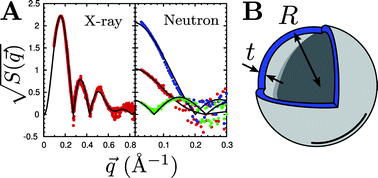Membranes that surround cells and separate their contents from the external environment are ubiquitous in biological systems. These membranes are organized assemblies consisting mainly of lipids and proteins, and are highly selective permeability barriers which control the flow of information between cells and their environment. It is accepted that the lipid bilayer is the underlying structure of most, if not all, biomembranes. As such, over the years scientists have exerted much effort in studying lipid bilayers and their biological relevance in hopes of understanding the functional mechanisms taking place at membrane interfaces. Neutron and X-ray scattering techniques are powerful tools for the characterization of the structure and dynamics of biomimetic systems as they provide unique access to microscopic structure and dynamics at length scales ranging from microns to intermolecular and/or atomic distances. The optimization of instruments and preparation techniques, as well as the new possibilities offered by protein deuteration, have opened up new avenues for the study of lipid/protein interactions that were not previously possible. One can now look at the insertion of biomolecules into membranes and accurately determine the structure as well as the dynamics of the interaction. To illustrate the usefulness of diffraction and scattering techniques with regard to biologically relevant systems, we review some of the leading edge studies that have taken place over the last couple of years in which these scattering techniques have played a central role.

You have access to this article
 Please wait while we load your content...
Something went wrong. Try again?
Please wait while we load your content...
Something went wrong. Try again?


 Please wait while we load your content...
Please wait while we load your content...